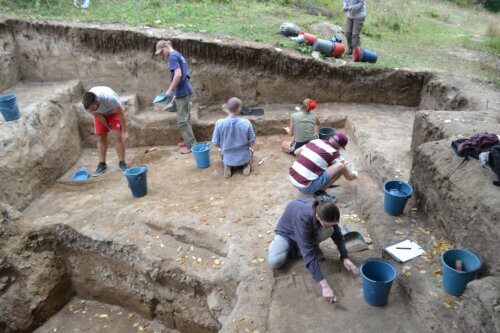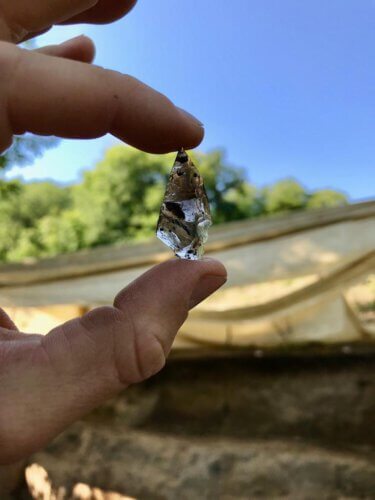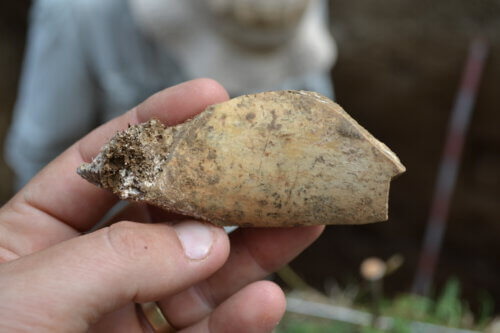Israeli and international researchers excavated a site in Armenia, which was at the edge of the known world at the time, and concluded that the wanderings were not random but seasonal

A new study published this week in the prestigious journal PLOS ONE describes the results of the joint project of the renewed excavations at the Kalavan 2 site in Armenia, a fascinating area located at the heart of the meeting point between Asia and Europe. The excavations were conducted between 2-2017 under the direction of Dr. Ariel Malinsky-Buller from the Institute of Archeology at the Hebrew University and MONREPOS Archaeological Research Center and Museum for Human Behavioral Evolution in Germany, in collaboration with Boris Gasprian and Dr. Phil Gelberman from the Institute of Ethnography and Archeology of the Academy of Sciences in Armenia. The first excavations were conducted in 2019-2006 by an Armenian-French team. This is an extensive and joint project of no less than 2007 universities and research institutes from Armenia, Israel, Europe and the USA.
The site where the research was carried out is the Kator site (under the dome of the sky) and dates from the time period of 60 to 45 thousand years ago. It rises to a height of 1,640 meters above sea level, and is considered an ideal location that allows to reproduce the models and form of mobility of hunter-gatherers, as well as to examine the form of social and economic adaptation to the topography and ecology of the mountainous areas where they settled in light of extreme seasonal changes. Similar to other sites found in Africa and Asia where the seasonal variation was less extreme, also in the "Kalban 2" area the hunter-gatherers were nomads and lived in temporary settlements. Unlike sites in Africa and Asia, the hunter-gatherers living in the Caucasus had to make do with limited food, harsh living conditions, and a need for greater mobility due to those extreme seasonal changes. The mobile communities took care of mapping the resources in the area so that they returned to the sites where they knew they had succeeded in surviving and would be able to do so in the future as well. The hunter-gatherers' decisions regarding the areas to which they migrated also take into account social factors such as finding mates and demographic viability, but the seasonal consideration was probably the most significant.

The climate today in Armenia consists of sharp changes in temperatures between seasons and rapidly changing precipitation. For example, the average temperatures in July can range from 19 to 33 degrees Celsius, while the temperatures in January can range from -4 to -27 degrees Celsius, depending on the altitude. "During the Late Pleistocene, seasonal fluctuations in temperature and humidity were even more pronounced than today," the article explained. "We can hypothesize that the settlement strategies of hunter-gatherer groups during the Pleistocene period were related to the seasonal temperatures that depend on the altitude and the seasonal distribution of precipitation. We expect that in winter, at particularly high altitudes characterized by extremely extreme temperatures - areas for living were not accessible and populations moved from them to lower altitudes or to closed sites, and perhaps took advantage of the moderate temperatures of the river valleys and local ancient lakes. In the spring and fall, the hunter-gatherer groups would follow the migration of the animals and frequently extend their range of mobility to different altitudes. In the summer and fall the hunter-gatherer groups would move to live for longer periods at higher altitudes."
When the researchers went out into the spaces, they were able to trace the movement of the hunter-gatherers, and discovered that it was relatively high compared to hunter-gatherers in other parts of the ancient world and was done in a certain circle. It turns out that the hunter-gatherers returned to certain points along the road that they created several times, as an integral part of a planned array of spatial settlement and planned decision-making. Furthermore, evidence of settlement at the site indicates repeated visits to the "Kalban 2" site over a period of 15,000 years. Remains of human activity found in three main layers around the site and in about ten additional thin layers prove this. "While we prefer to move less during the cold-freezing periods of the year, to warm up in our homes by the warming fireplace, in the ancient era they preferred to move faster during the cold periods - the hunter-gatherers chose to look for warmer places rather than try their luck and bet on the campfire they set up in the camp on the heights of the snowy mountains ”, explains Dr. Malinsky-Buler.
Bones of the animals discovered on the site (2,163 bones) and studied, indicate that they were used for eating and making clothes by man. The variety of animals found on the site, including wild boar - bison, horses, wild goats and elk, rodents and other extinct species make it possible to reconstruct what happened in the area. The site mainly found many fragments of long bones that were less rich in meat, which indicates that the hunter probably took place nearby and selected parts were brought to the site. "Selective transport of body parts from hunting sites to 'Kalban 2' was apparently carried out due to the rather steep environment of the site, which reduced the difficulties of transport (compared to other sites in the area)", explained in the article.
Another evidence of the transportation of very important raw materials to 'Kelban 2' can be found in the stone tools that survived on the site, mainly made of obsidian (volcanic glass). The results of the examination of the raw materials of the obsidian showed that they came from an area within a radius of about 100 km of walking according to the terrain route. Rarer sources of raw materials reached a distance of more than 250 km of walking. "Such distances seem much larger compared to those identified in Mediterranean Europe and the Levant at the same time. Among the European, Mediterranean, and Levantine hunter-gatherer sites, almost 90% of the raw materials consisting of stone were brought from nearby exploitation sites within a two-hour walk of the site. The findings from 'Kalban 2', on the other hand, indicate high mobility over larger areas," the researchers explain in the article.

Dr. Malinsky-Buler concludes: "Based on the current local conditions in Armenia (annual precipitation distributions, snowfall amounts, seasonal animal migration patterns), we assume that the landscape in the Late Pleistocene of Armenia consisted of the dispersion of diverse resources over different distances. We hypothesize that the human groups in the late Pleistocene survived thanks to mobile strategies, which take into account the resources in the space".
More of the topic in Hayadan:
